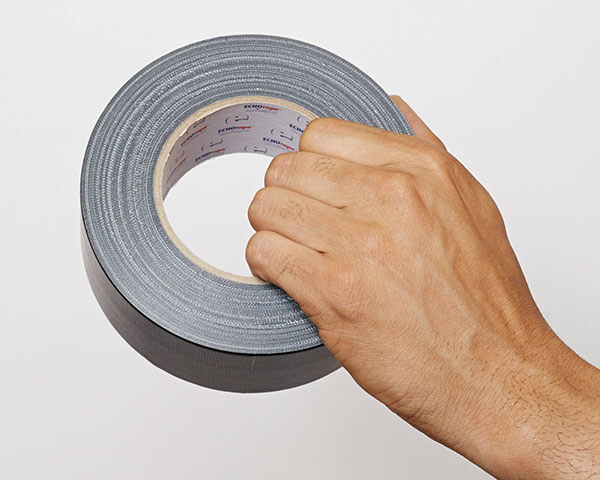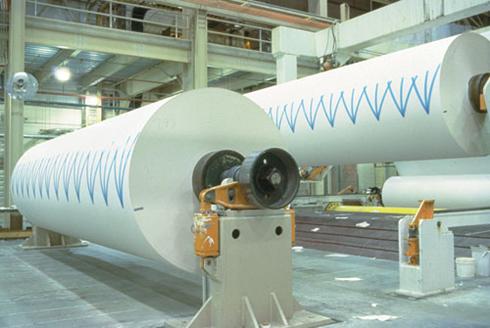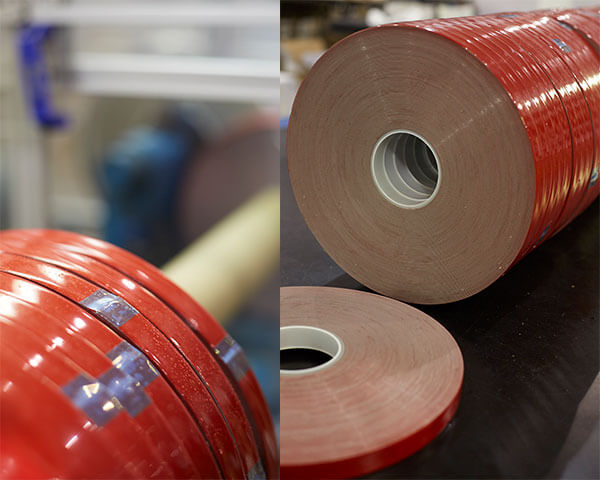It’s one of the most popular adhesives because of its versatility, but there are many misconceptions about the toolbox superhero called duct tape. This complete technical guide will cover everything you would ever want to know, including:
- The History of Duct Tape
- How Duct Tape Works
- The 7 Types of Duct Tape (And How to Choose the Right One)
- Why Duct Tape Sometimes Fails
- The Creation of a Better Duct Tape
The History of Duct Tape
In 1943, Vesta Stoudt had a job in a munitions factory where ammo cases were sealed with paper tape and melted wax. Worried the cases were too hard to open on the battlefield, Stoudt proposed a fix: Use waterproof cloth tape instead.
Johnson & Johnson adapted surgical adhesive tapes to Stoudt’s specifications, and soldiers nicknamed the material “duck tape” in reference to its ability to repel moisture “like water off a duck’s back.” (They also dubbed it 100-mph tape because it could hold together a speeding jeep!)
Following World War II, duct tape began to catch on in the U.S. as a handy tool for home construction. People were using it to hold metal air ducts together, so the company rebranded the product as “duct tape” and updated it with a matching silver color made from powdered aluminum.
Thus, duck tape became duct tape.
How Does It Work?
Duct tape relies on what’s known as a pressure-sensitive adhesive (PSA) for its inherent stickiness. PSAs are soft polymer blends that exploit van der Waals forces to join two objects together. The strength of the bond is due to the fact that the adhesive is hard enough and its viscoelastic properties are powerful enough to resist flow when stressed. This is not the same as the mechanics of structural adhesives like, say, Elmer’s glue. Those adhesives require the evaporation of a solvent to create a chemical bond.
Interestingly, its namesake usage (“duct”) is one of the few things that duct tape isn’t recommended for. Lawrence Berkeley National Laboratory conducted tests in 1998 to see how well different types of tape performed at sealing ducts, and, compared to the other products, duct tape was the clear loser. Using duct tape on actual ductwork is now considered a code violation in many buildings.
Mythbusters has devoted three entire episodes to exploring some of duct tape’s most extreme applications. The team was able to successfully use duct tape to patch a damaged airplane fuselage, construct a functioning cannon, build a usable bridge, and lift a 5000-pound car. Of the 18 myths they tested, only one was busted (turns out you can’t use duct tape to barricade a car driving at 60 mph).
7 Types of Duct Tape — Are You Using the Right One?
Duct tape’s initial design was simple but effective: a strong fabric bonded to polyethylene film for sealing/waterproofing, silver-gray coloring to match metal ductwork, and a thick coating of adhesive to seal the joints and make them airtight.
But people quickly determined that this specialty tape could be used for a variety of other purposes, and the boom was on. Many new versions were manufactured – each with different qualities of fabric, polyethylene, and adhesive – for many different end-uses. As a result, manufacturers now offer a wide range of grades of polyethylene/fabric types and in a wide variety of colors.
1. General Purpose
With a low fabric count, a thin polyethylene film, and a low weight adhesive, general-purpose tapes work well enough for odd jobs where long service life isn’t necessary.
2. Industrial Grade
With industrial-grade tapes, the fabric and polyethylene are upgraded, so the tape becomes more of a “workhorse” with added adhesive coating weight. One popular variation is multi-colored industrial tape that is used to seam and hold carpets at exhibitions, where the adhesive must be removed cleanly.
3. Professional Grade
Sometimes called “contractors’ grade” these tapes offer more of an upgrade to the components of the industrial-grade tape for added strength, adhesion, and durability.
4. Gaffer’s Tape
Typically, gaffer’s tape is a matte black for minimal light reflection and is used in movies, television, and photo studios to temporarily tape cables to the floor or light fixtures to vertical posts. This type of tape needs to be able to be easily torn by hand and remove cleanly.
Read more about Gaffer’s Tape vs. Duct Tape here.
5. Stucco Tape
Stucco tape is used to attach protective polyethylene film over doors and windows during house construction prior to spraying the outside walls with stucco. Designed to be used outdoors for several days at a time, stucco duct tape must be able to resist the ultraviolet of the sun’s rays during that time – and not come apart from the vinyl window frames.
Read more about Why Stucco Tape Really Matters here.
6. True Duct Tape
This one lives up to its name – duct tape is truly intended for sealing air ducts. Duct tape must be permanent and able to withstand the prolonged heat and air pressure for the lifetime of the duct. It may even need to be flame retardant to meet some building codes. Duct tape is the true top of the line, a high tensile, hardworking tape.
7. Coated Cloth Tape
A roll of coated cloth tape has gone with every U.S. manned space launch, and is also commonly known as “Mission Tape.” This tape played an essential role in the construction of the carbon dioxide absorbers which saved the lives of the three astronauts in the ill-fated Apollo 13 mission.
With such a wide variety to choose from, start by considering exactly what you expect your tape to do. Then, evaluate the right polyethylene/fabric backing judged by tensile strength, as well as the right adhesive coating thickness, judged by adhesion level, for the best performance with the lowest cost.
Common Adhesive Problems
Believe it or not, standard-issue duct tape is not as versatile as you think. It has its uses—making permanent repairs on the spot —but the following is a list of surfaces that are problems for duct tape.
- Wet surfaces: While duct tape is water-resistant, it should only be used for emergency leak repairs. Prolonged submersion in water will cause the adhesion to peel away.
- Hot surfaces: Surfaces that reach temperatures over 140°F cause the adhesive to soften, lose its strength, and slip from the attachment.
- Cold surfaces: Similarly, duct tape does not work well in extreme cold. Freezing temperatures cause the adhesive to harden which diminishes its sticking power.
- Surfaces with Prolonged Exposure to UV Light: UV light can break down the tape’s adhesive bond over time. If you need the tape to remain exposed to direct sunlight, it’s best to use a product that’s been specially treated for UV protection.
- Uneven Surfaces: Duct tape has trouble sticking to rough surfaces such as concrete and stucco. Because it has a thin adhesive layer, this specialty tape is only able to make contact with the high points of a surface, which produces a weaker bond.
- Dirty Surfaces: In order to achieve maximum adhesion, surfaces must be clean, dry, and dust or oil-free.
- Corrugated Cardboard: Don’t use duct tape to seal cardboard boxes. These porous surfaces contain many small fibers on the surface that break away and cause the adhesive bond to fail.
- Materials with Low Surface Energy: Materials, like Teflon, have low surface energy, which means it prevents the adhesive from “wetting out” or spreading out to form a strong bond.
- Painted Surfaces: Applying duct tape to a surface that’s been painted or treated with another sealant means that the tape is only adhering to the surface layer and not the actual substrate.
When Duct Tape Fails: 6 Reasons To Choose A Different Tape
Duct tape is often cited as being the top go-to, all-purpose repair tape. It can do anything from patching to joint sealing to bundling lumber. However, this versatile tape does have its limits. Here are the top six conditions where duct tape falls short and what you should be using instead.
1. Heat
Despite its name, regular off-the-shelf duct tape is not a good choice for sealing or repairing heating and ventilation ducts. The heat softens the adhesive, causes it to lose its strength and slip from the attachment. It also carries no safety certification, which means it may burn and produce toxic smoke. (For that reason duct tape is not allowed at all on ducts in states such as California.)
As an alternative, consider All Purpose Aluminum Foil Tape, which works up to 248° F and is flame-retardant
2. Water
Duct tape is water resistant, not waterproof. It will work in a pinch until a more permanent solution can be applied, but over time the adhesion will peel away when completely submerged in water.
Consider All Leak Repair Tape instead; a permanent adhesive that forms a watertight seal and works in both extreme heat and cold.
3. Temporary Repairs
Think twice about using duct tape for temporary uses such as sealing a windowpane or hanging plastic sheeting. In certain situations, it makes an excellent stopgap until a more permanent solution can be applied. But this type of adhesive will leave behind a sticky residue when removed.
A better option would be All Purpose Repair Tape, which maintains a strong grip while removing cleanly from any surface
4. Uneven Surfaces
Standard duct tape has a thin layer of adhesive so it adheres best to smooth, even surfaces. Applying it to rough or irregular surfaces means the tape will only make contact with the high points thereby lessening the strength of its bond.
Consider Outdoor Stucco Duct Tape; a thicker layer of adhesive means it’s able to connect with more surface area and maintain a stronger hold.
5. Cold
If you’re working in cold conditions, repairing vinyl siding or refrigeration hoses, duct tape is not the answer. Extreme cold hardens the adhesive and diminishes sticking power of existing duct tape. And if you are applying the tape under cold conditions, it may not stick at all.
We have a number of cold-weather solutions, but All Weather Repair Tape lasts in temperatures as low as -30°F!
6. UV Light
Over time exposure to sunlight will cause duct tape’s adhesive to dry out and become brittle or delaminate. For outdoor projects that require tape, it’s best to choose one that’s been treated to resist the effects of ultraviolet light, like Premium Grade Stucco Duct Tape.
A Bigger, Better Duct Tape

But with so many options already on the shelves, how do you make a better duct tape??
“The inspiration for CL-W6064 is the culmination of 40 years of experience combined with the frustrations professional contractors encounter daily on the job site,” says Risa Edelstein. “We wanted to create a material that was strong but lightweight, industrial quality without requiring industrial equipment to use and took advantage of the inherent versatility of duct tape.”
ECHOtape CL-W6064 strikes a delicate balance between strength and usability, providing the maximum amount of sticking power without sacrificing ease of use. How did we make that happen? By using a new, advanced technology — a two head coating process. The first coat ensures high sheer strength, and the second coat, high initial tack. The result is a beautifully streamlined piece of tape that is lighter, yet stronger than you would imagine, and easy to unwind. Read more about CL-W6064 here.
With such a wide variety to choose from, start by considering exactly what you expect your tape to do. Then, evaluate the right polyethylene/fabric backing judged by tensile strength, as well as the right adhesive coating thickness, judged by adhesion level, for the best performance with the lowest cost.
Whether you’re looking for a type of duct tape or a different adhesive tape, ECHOtape can help. Contact us today for help in selecting the right tape for your next job.




